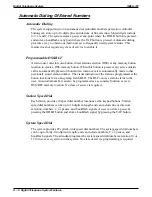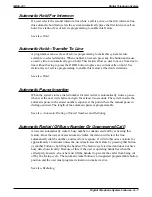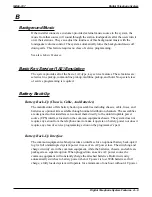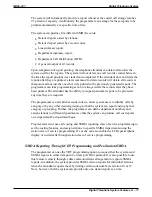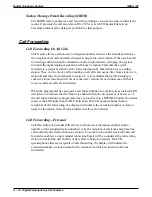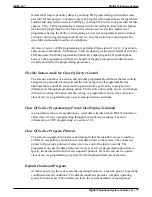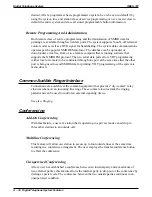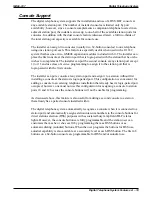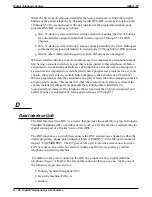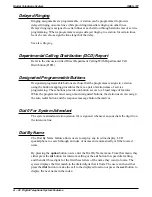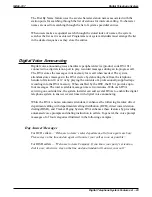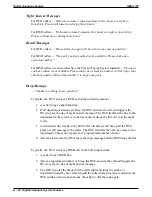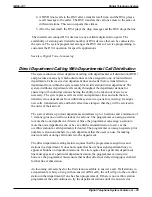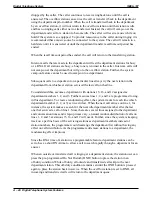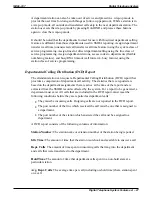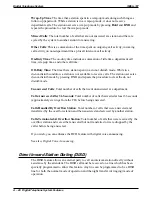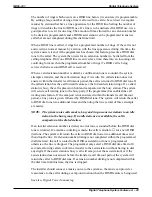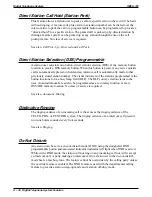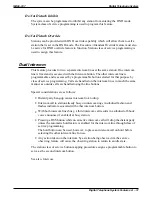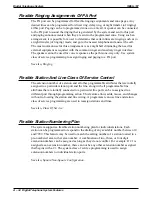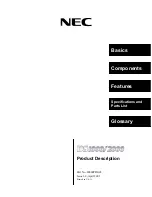
Console Support
The digital telephone system supports the installation and use of a DSS/BLF console at
any available station port. The number of installed consoles is limited only by port
availability; however, since a console complements a companion telephone located in an
adjacent station port, the installer can use up to one-half of the available station ports for
consoles. In addition with the dual console feature (discussed later), a full two-thirds of
the total station port capacity is available for console use.
The installer can assign two consoles (usually two 32-button consoles) to one telephone
using one station port each. This feature is especially useful when used with a G1632
system that has one or two GM408 expansion modules included with it. The installer can
place the first console at the station port that is logic-paired with the station that he or she
wishes to complement. The installer can put the second console at any station port except
10 or 11 and use class of service programming to assign it to the station port that is
logic-paired with the first console.
The installer can put a console at any station port and assign it to a station without first
installing a console at the station’s logic-paired port. This configuration is convenient for
adding a console to an existing telephone installation that already has its logic-paired port
occupied; however, one must not use this configuration for assigning a console to station
ports 10 and 12 because the console buttons will not be usable for programming.
As discussed above, this feature is also useful for adding a second console to a station
that already has a paired console installed with it.
The digital telephone system automatically recognizes a console when it is connected to a
station port and automatically assigns station intercom numbers to the console buttons for
direct station selection (DSS) purposes with associated busy lamp field (BLF) status
lights. However, the console buttons are fully programmable and the station user can
customize them as he or she sees fit by programming them as DSS buttons or as
automatic dialing (autodial) buttons. When the user programs the buttons for DSS use,
autodial capability is also available at a secondary level at each DSS button. The first 48
buttons on a 64-button console are programmable for DSS and/or autodial use.
IMI66–107
Digital Telephone System
Digital Telephone System Features A – 19
Summary of Contents for Air Impact DSU
Page 2: ...Printed in U S A GCA47 157 ...
Page 30: ......
Page 112: ......
Page 192: ...Digital Telephone System IMI66 107 3 80 System Programming ...
Page 283: ......
Page 284: ......
Page 285: ......
Page 286: ......
Page 287: ......
Page 288: ......
Page 289: ......
Page 290: ......
Page 291: ......
Page 292: ......
Page 293: ......
Page 294: ......
Page 295: ......
Page 296: ......
Page 297: ......
Page 298: ......
Page 299: ......
Page 300: ......
Page 301: ......
Page 302: ......
Page 303: ......
Page 304: ......
Page 305: ......
Page 306: ......
Page 307: ......
Page 308: ......
Page 309: ......
Page 310: ......
Page 311: ......
Page 312: ......
Page 313: ......
Page 314: ......
Page 315: ......
Page 316: ......
Page 317: ......
Page 318: ......
Page 319: ......
Page 320: ......
Page 321: ......
Page 322: ......
Page 323: ......
Page 324: ......
Page 325: ......
Page 326: ......
Page 327: ......
Page 328: ......
Page 329: ......
Page 330: ......
Page 331: ......
Page 332: ......
Page 333: ......
Page 334: ......
Page 335: ......
Page 336: ......
Page 337: ......
Page 338: ......
Page 339: ......
Page 340: ......
Page 431: ......
Page 436: ......
Page 437: ......
Page 438: ......


